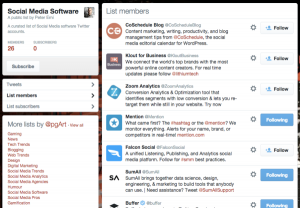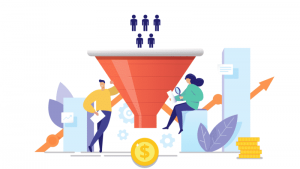— July 19, 2017

Free-Photos / Pixabay
Rather than dismissing current retail trends as flash-in-the-pan fads, savvy retailers recognize that BI and analytics technology fuels many of these innovations. They use data to capitalize on these trends in new, innovative ways that don’t simply copy their competitors.
Here are three analytics-fueled retail trends revolutionizing the customer experience.
- Customer observations and focus groups
While researching customers isn’t new, we’ve seen a resurgence of interest in granular customer data. Successful online retailers provide the right products to customers at exactly the right time, and others want to provide a similar experience.
BI and analytics platforms make these insights possible, and they may become even more specific as the technology progresses. Brick-and-mortar retailers can look forward to what I call “real behavioral data” – emerging video technologies that analyze foot traffic, facial reactions, and body language while consumers interact with products. Real behavioral data’s potential isn’t limited to physical retail locations, though. Online retailers holding focus groups can also use these technologies to produce richer data than traditional question-and-answer methods generate.
While real behavioral data is still developing, retailers are already showing interest in its potential to enhance analytics operations and provide deeper insight into customers’ decisions. Keeping up with customers’ interests is imperative for retailers, and BI platforms are constantly providing new opportunities to explore data-driven strategies.
- Customer journeys
Some retailers still think of customer journeys in terms of traditional loyalty programs, rewards cards, and flash sales. These old-fashioned strategies don’t work as well when notifications are constantly pinging our phones, however. Retailers are now embracing the customer journey instead. Customers’ retail experiences, whether in a physical store or on a website, should pique their interest at every step.
To craft an engaging journey, retailers should think of their customers’ experiences like a video game. Retailers need to create goals, levels, and checkpoints that provide different statuses and rewards, and analytics help determine which ones will produce the best results. Ensuring that this is a digitized game is also important, especially for brick-and-mortar retailers. Apps and websites can pull the customer in, and to retain their interest, retailers must invest time in a strong analytics foundation that guides development.
- Engaging rather than targeting
Like the flash sales that permeated old retail methods, targeting is also becoming less effective in our mobile environment. Successful retailers are now using analytics to ensure their service, stock, and atmosphere engage customers.
Rather than waste time determining which customers are the perfect match for their latest discount, many retailers focus on providing exciting experiences. Analyzing data lets retailers determine which elements keep customers shopping while weeding out aspects that turn them away. Rather than assuming what experiences customers want, retailers can optimize their journey through the rich analytical insights BI platforms provide.
Many retailers turn to industry trends to compete and stay relevant, but simply implementing trendy new programs isn’t enough for long-term success. The smartest retailers use BI platforms and analytics to derive actionable insights from these trends. Using bad data and assumptions produces uninspired, gimmicky experiences, but analytics-driven decisions result in programs that keep customers interested long-term.
Business & Finance Articles on Business 2 Community
(59)
Report Post





